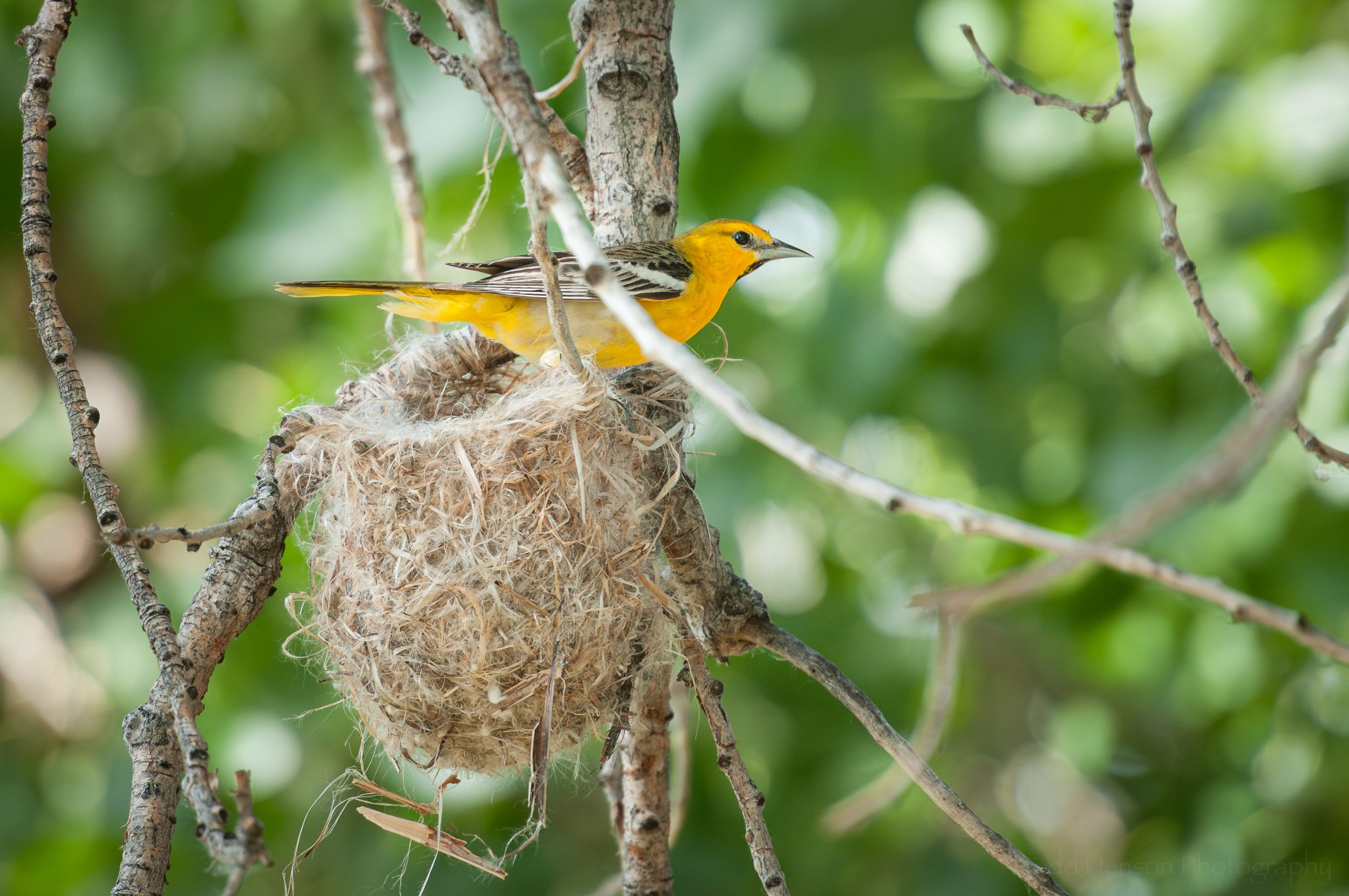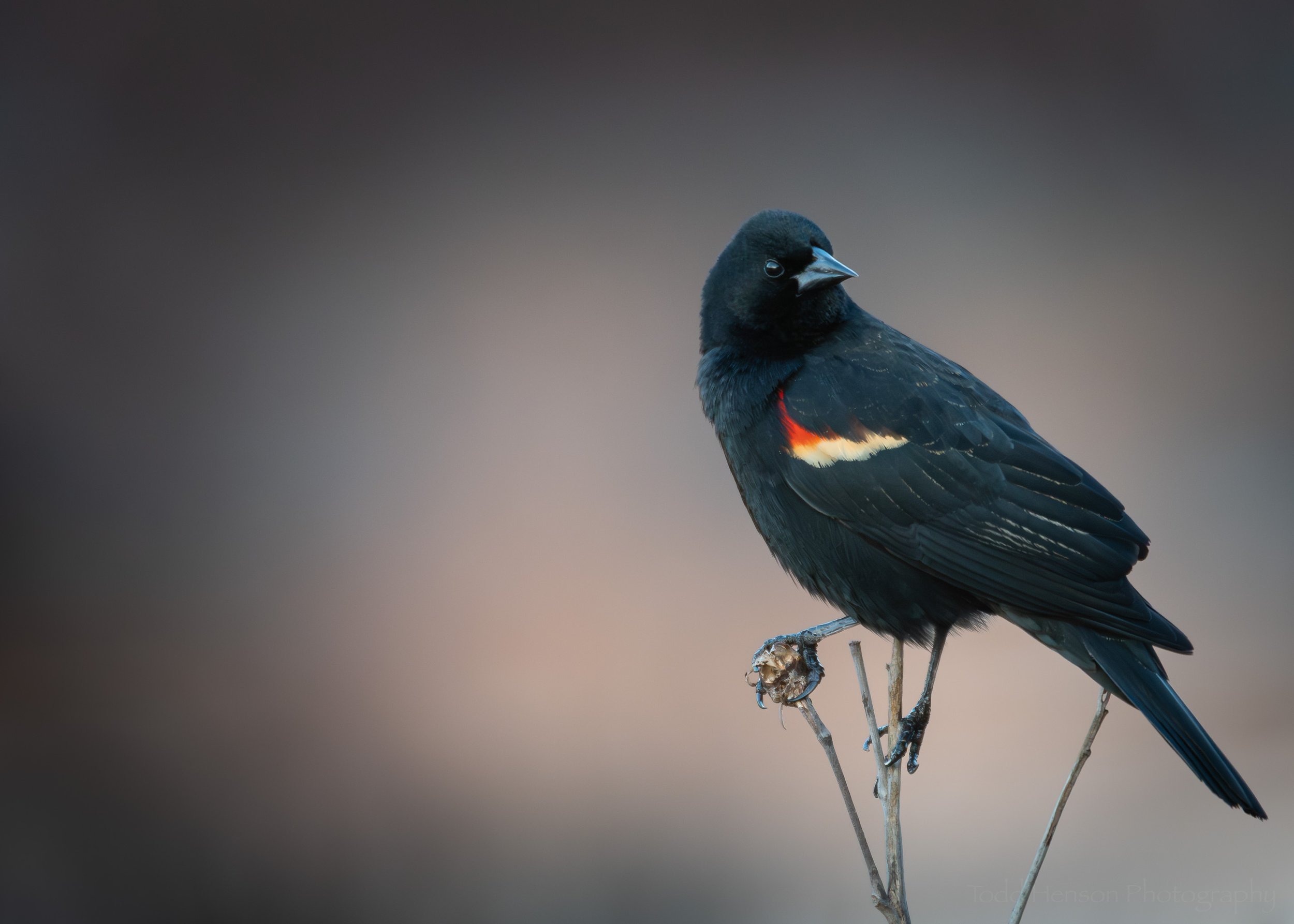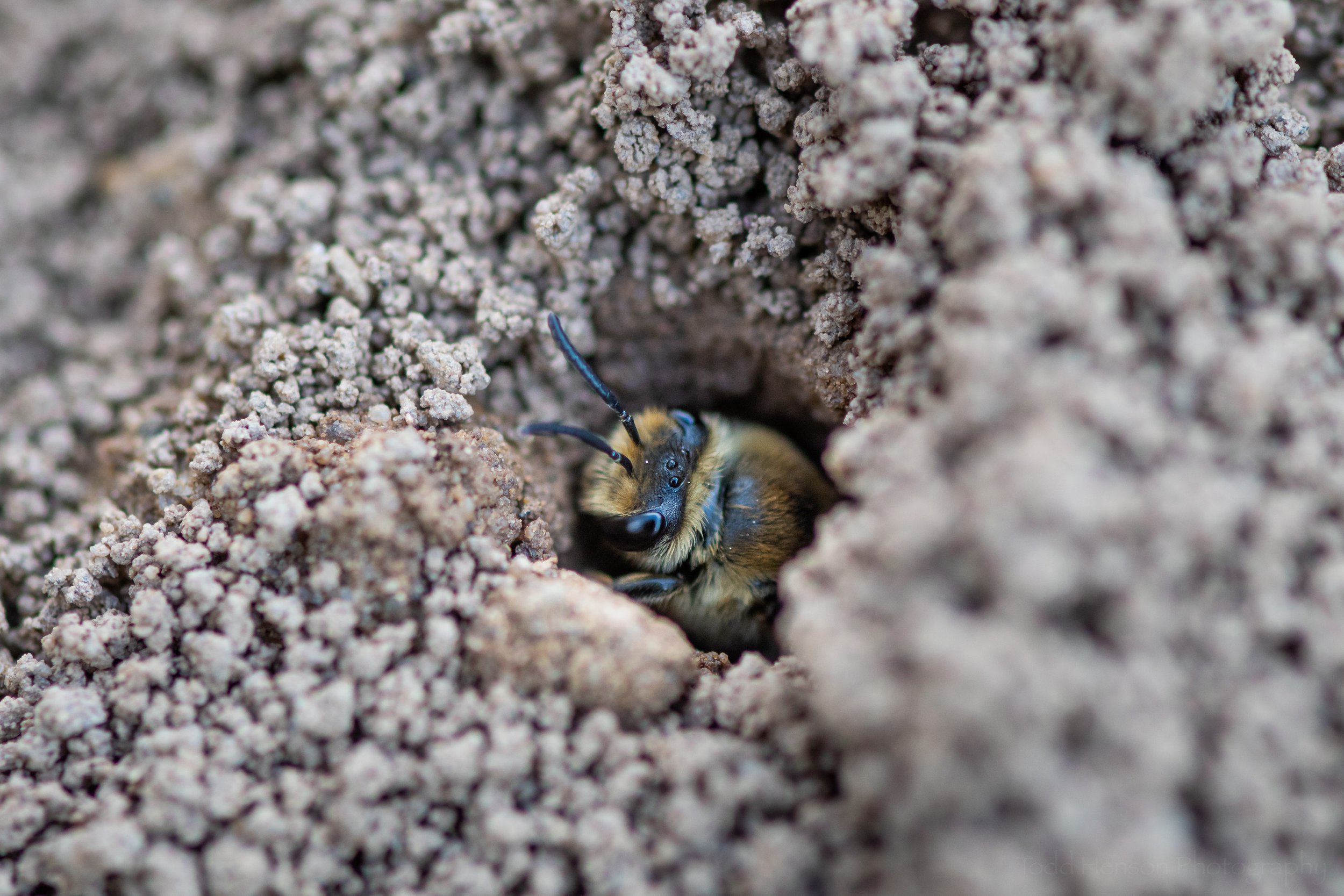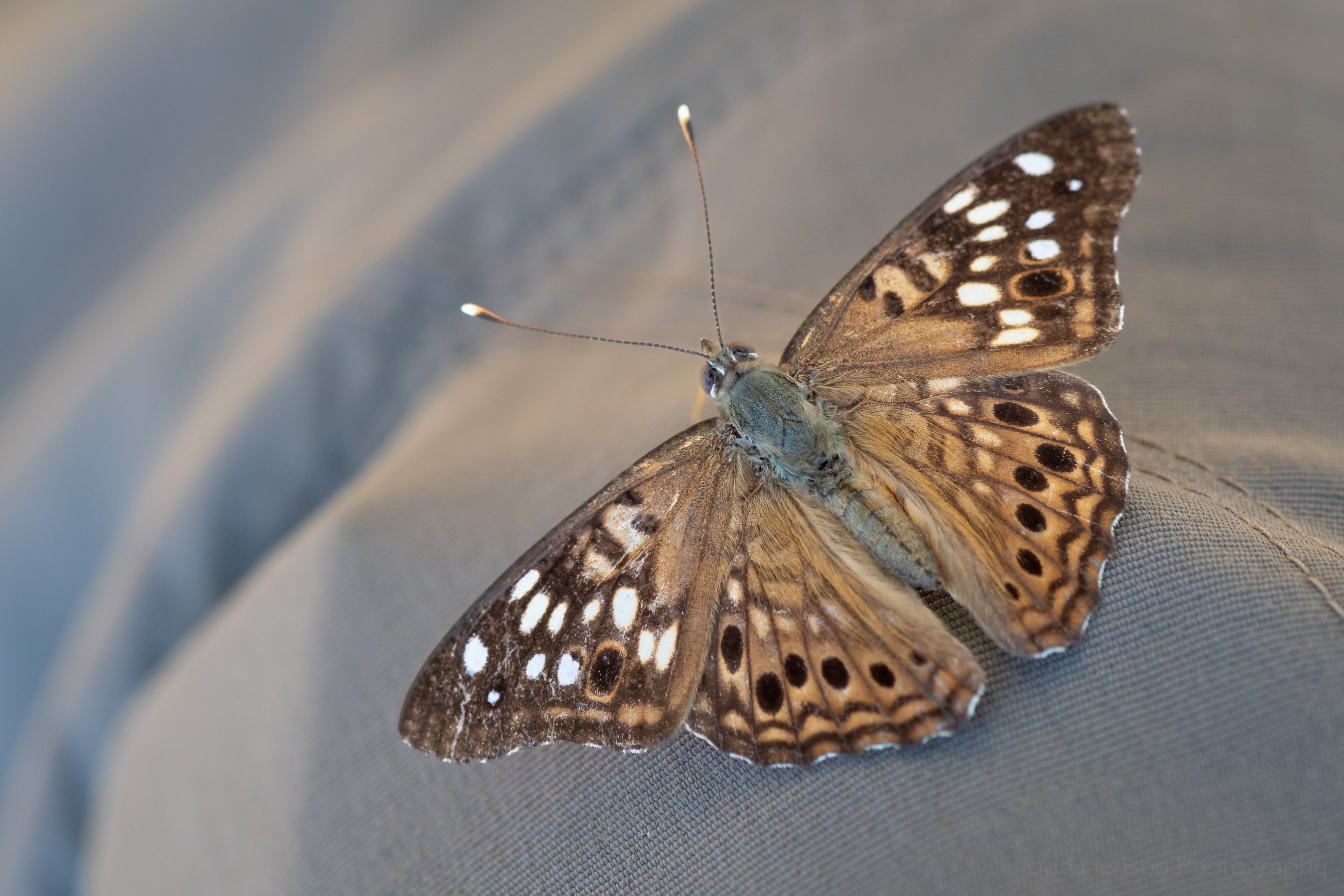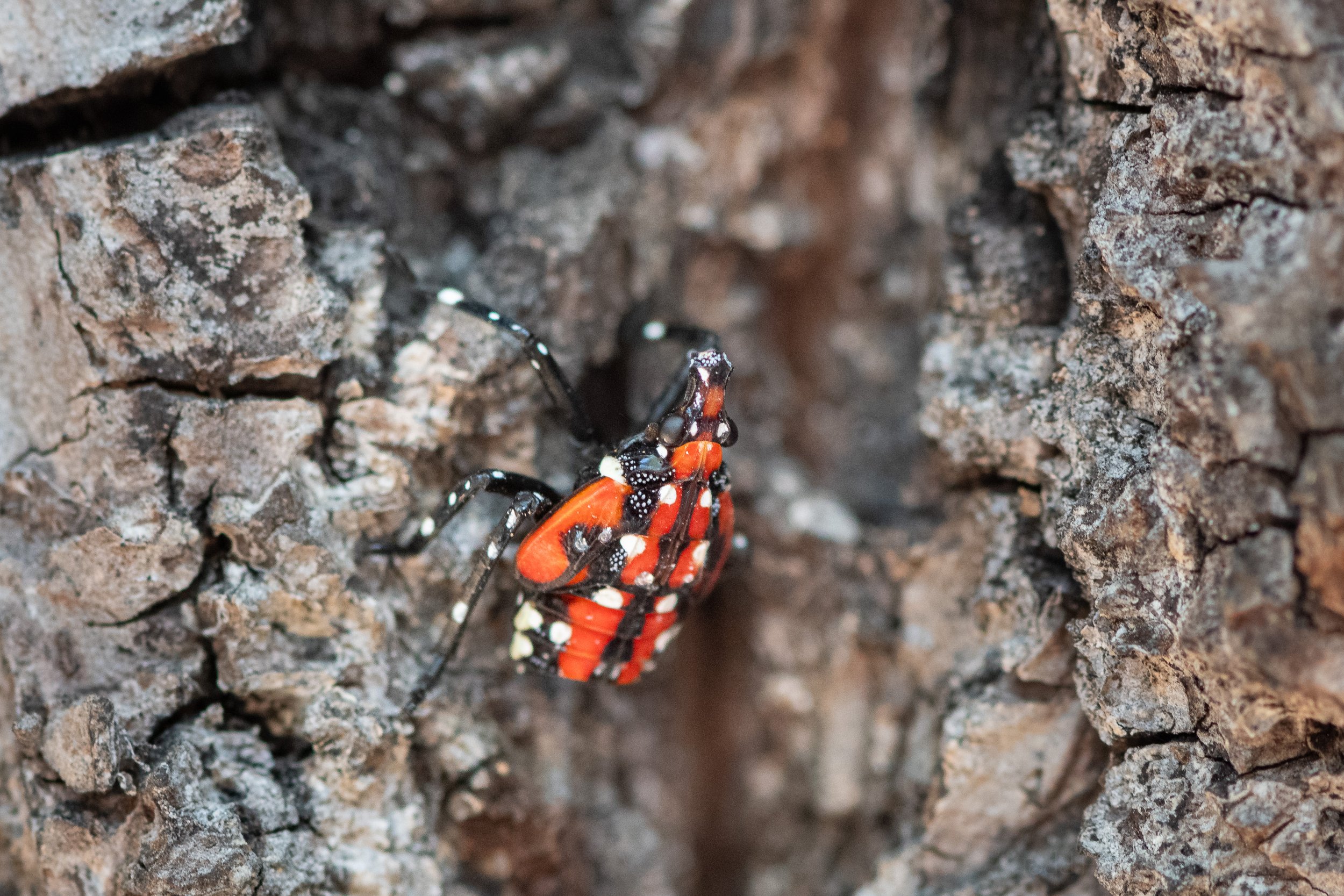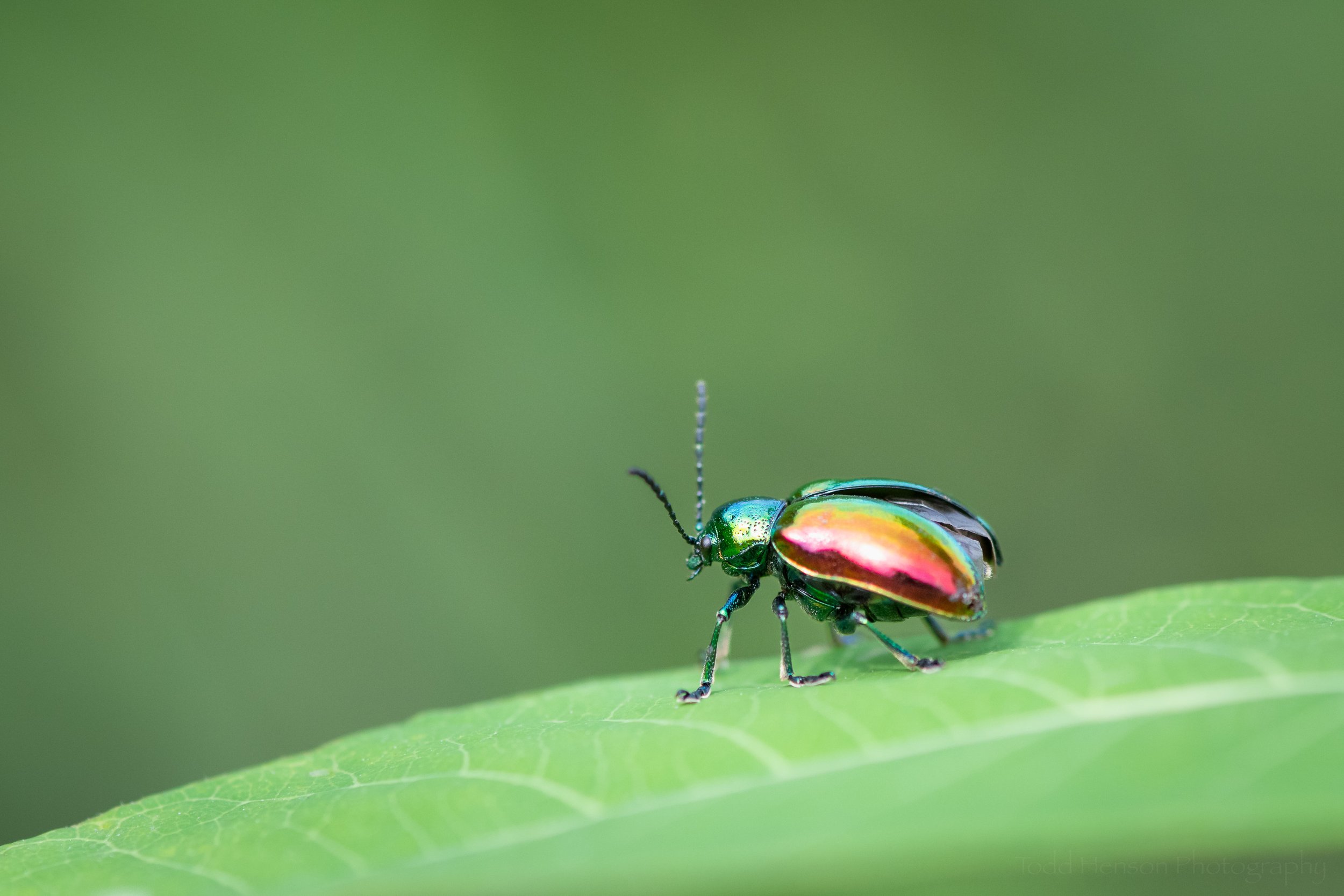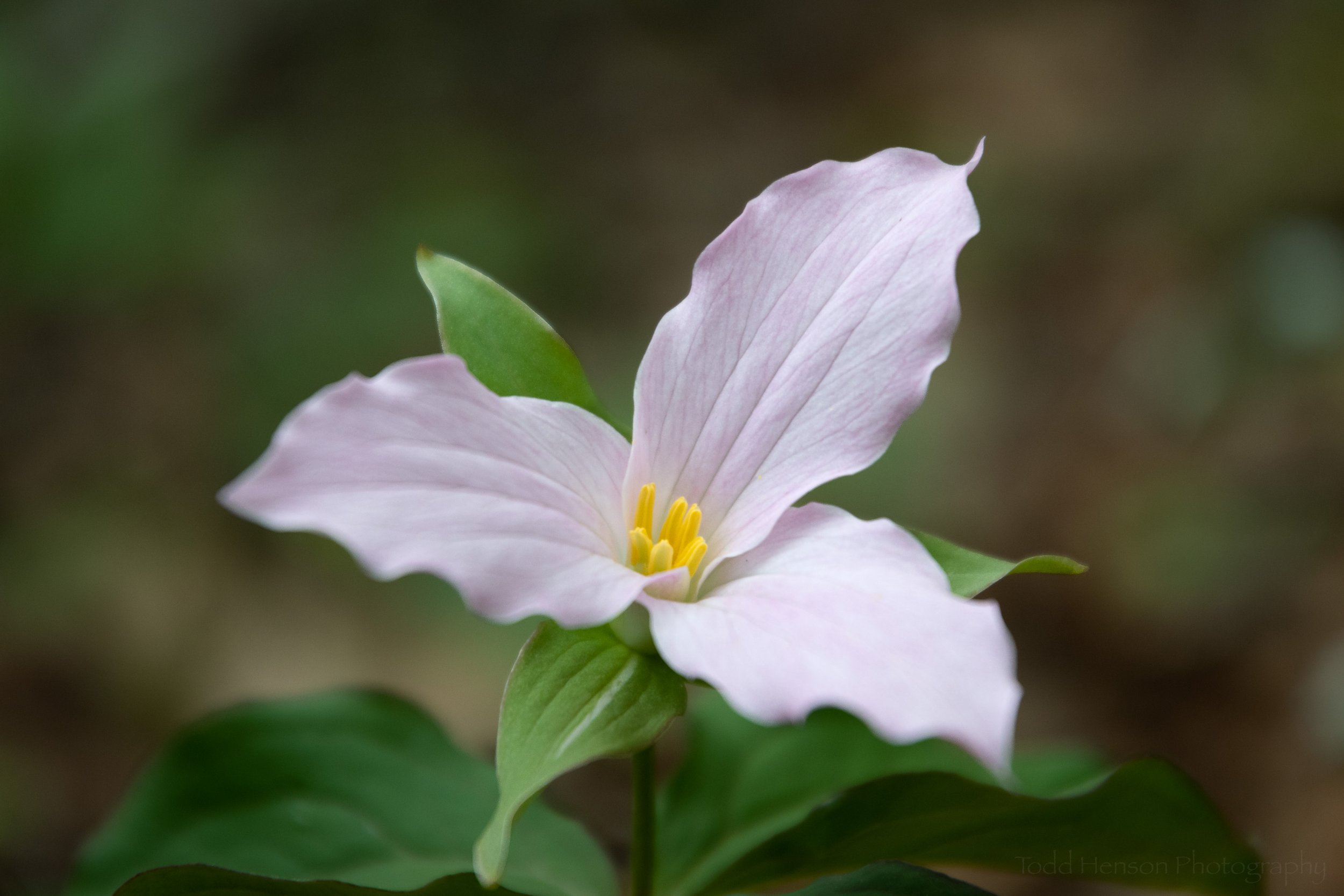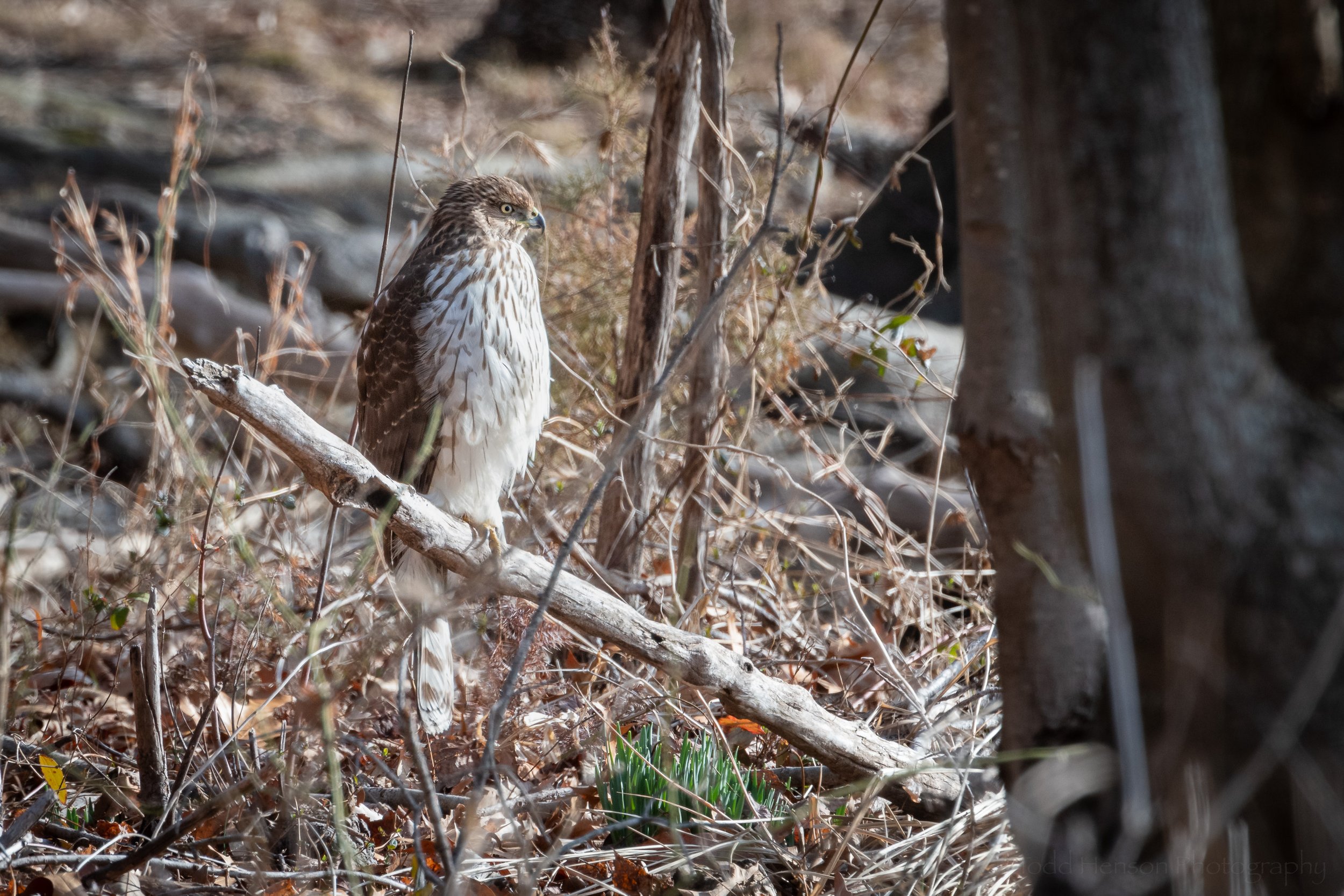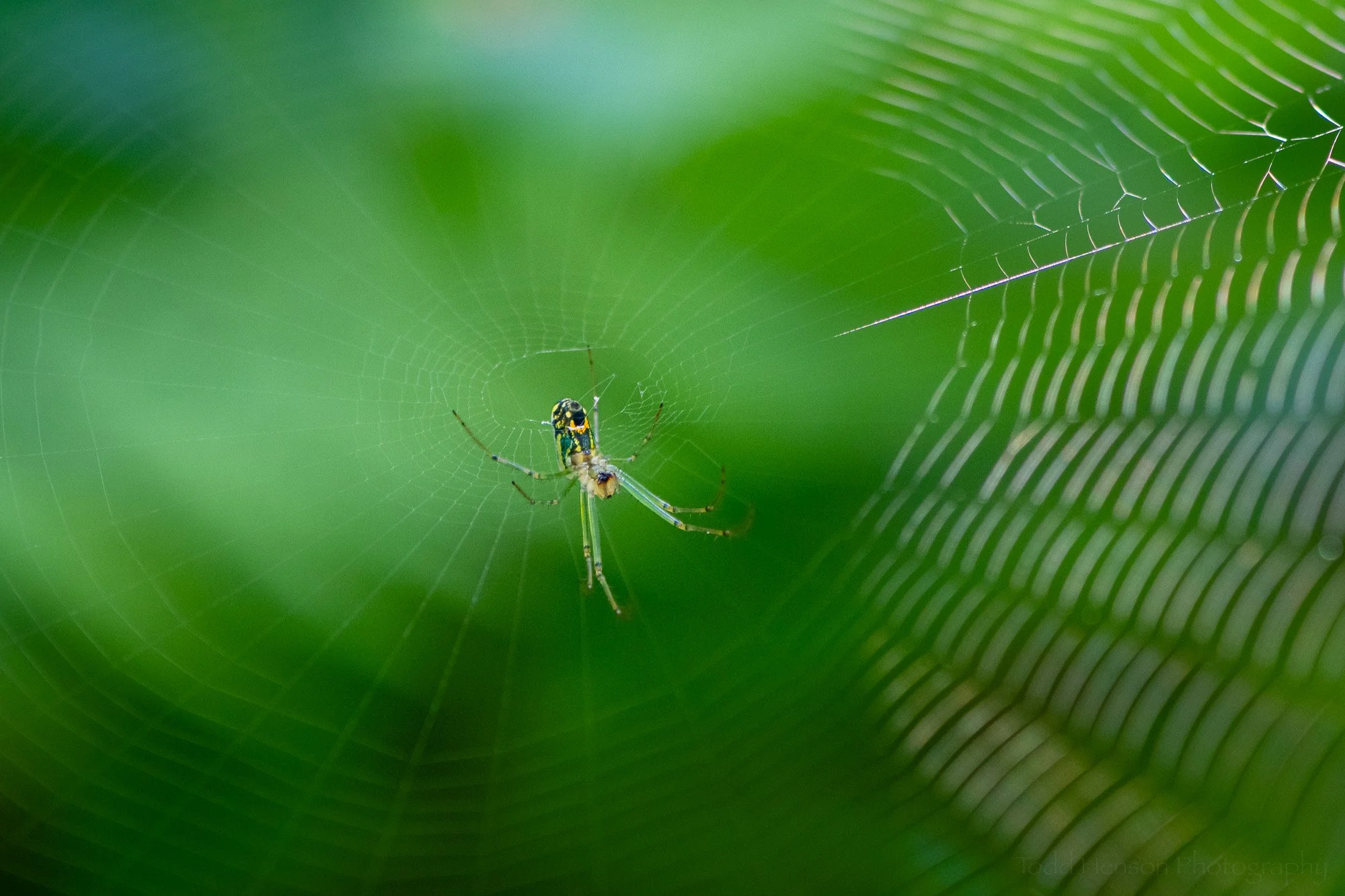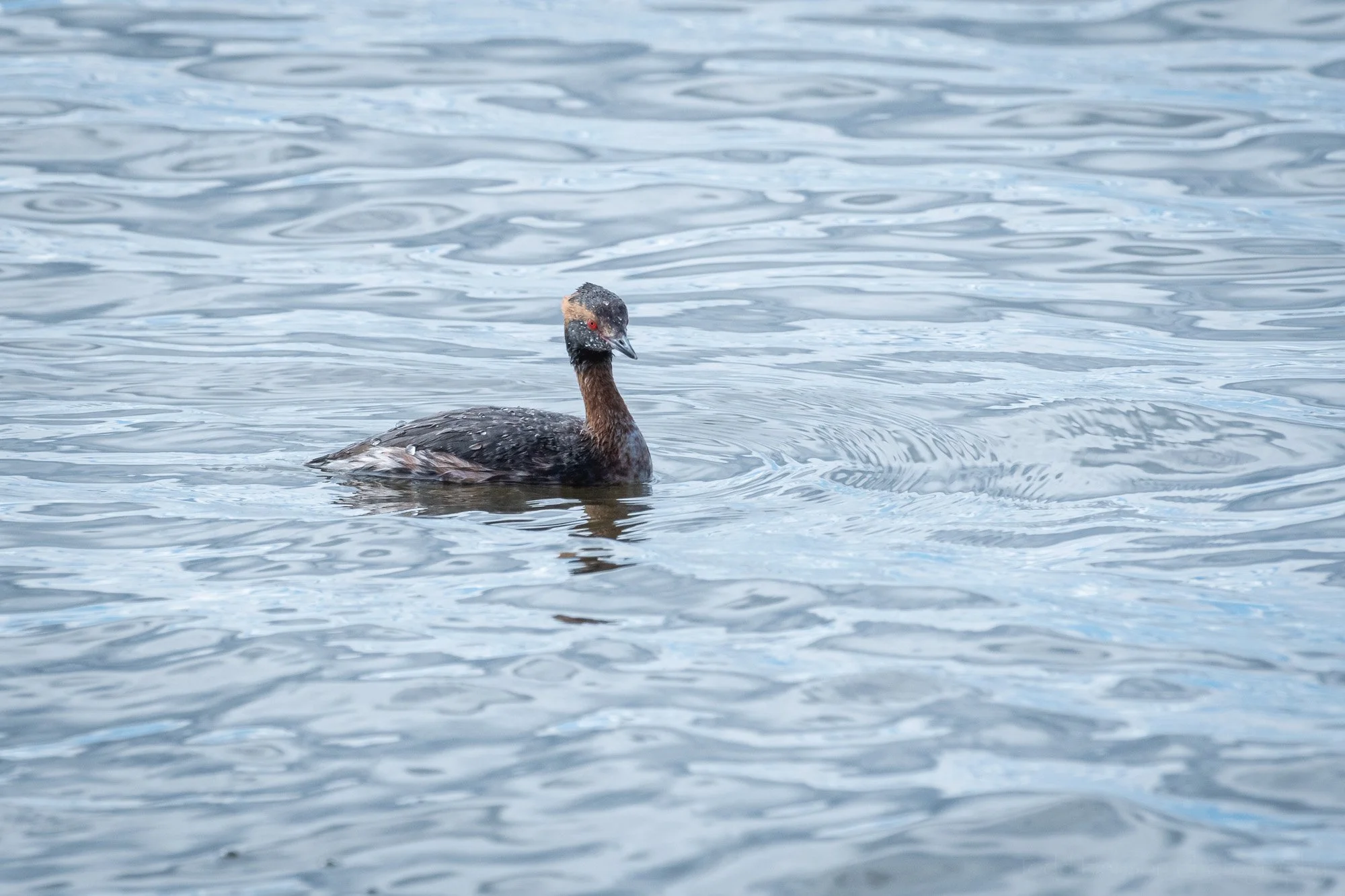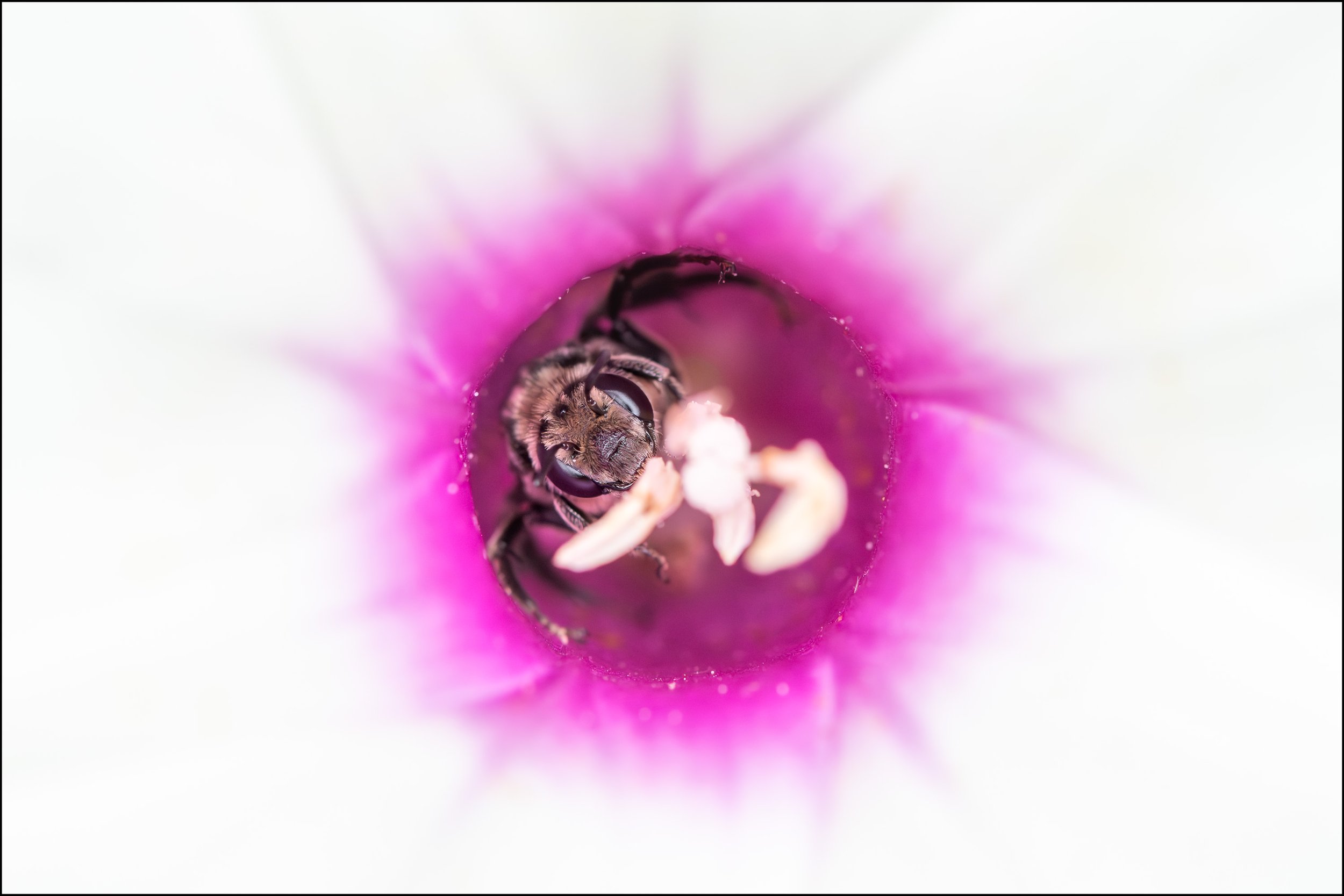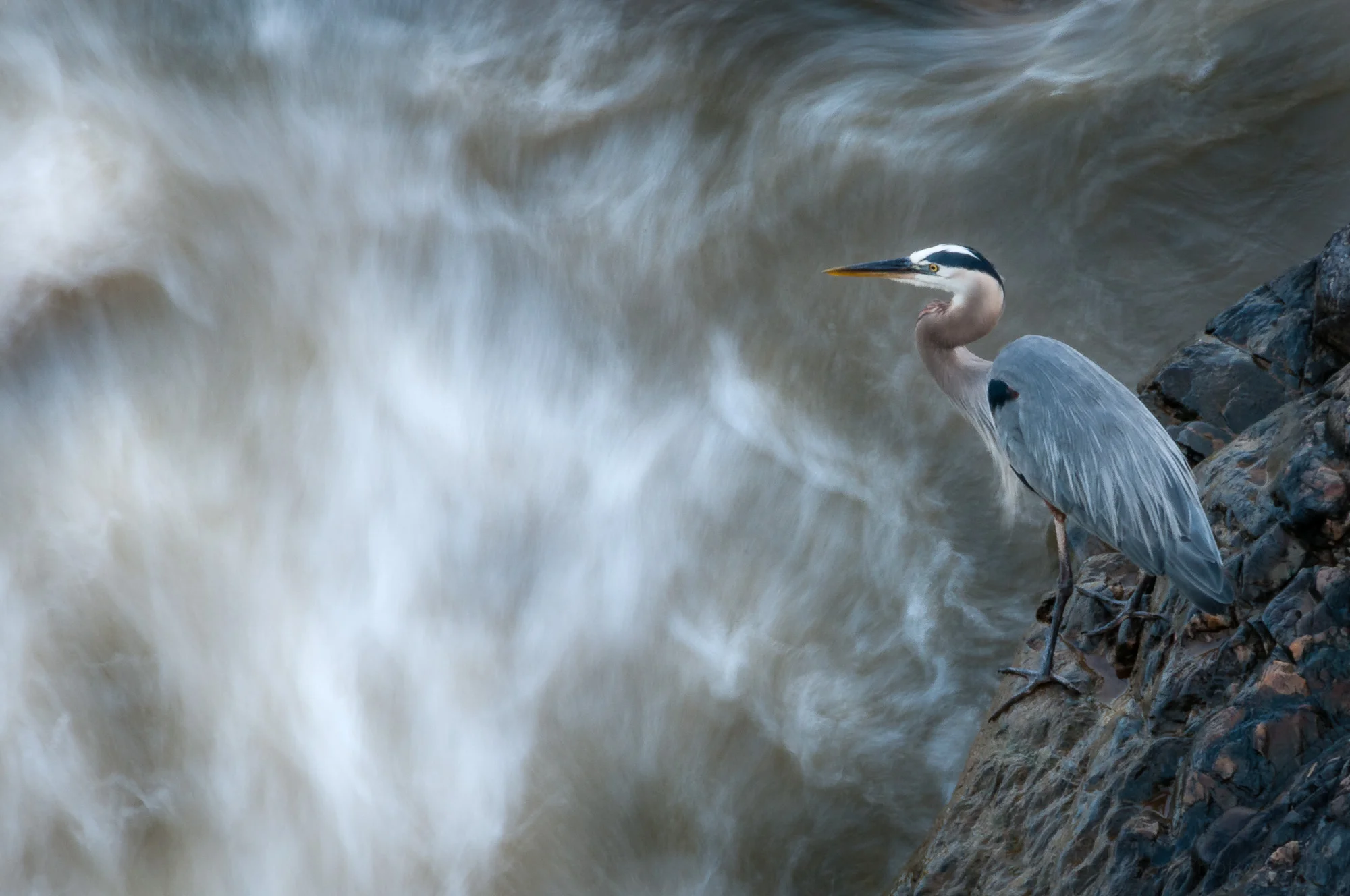A grasshopper perched on a pink chrysanthemum.
I recently shared some photographs of a grasshopper on chrysanthemums. Viewing these photographs piqued my interest in grasshopper anatomy, so I’ve zoomed in on certain sections of a couple photographs to take a closer look at some key features. I am not an expert in grasshopper anatomy by any stretch, so this will only be a very brief look.
Head and Thorax
Take a look at the head region of the grasshopper, where you can see its eyes, antennae, and mouthparts. They have more eyes than we do. The compound eyes are easy to identify, they are the large dark objects that look like eyes. But you can also see smaller simple eyes, called ocelli (singular ocellus). These are whitish in color in the photos and are located beside each compound eye and above the antenna. They have another ocellus, which we can’t see in these photos, right on their forehead between the compound eyes and antennae.
A side view of the head and the pronotum over top of part of the thorax. I wonder if that red line on its cheek is a scar from a fight with another grasshopper?
Naturally enough, the grasshopper gets its sense of taste from organs in its mouth, and its sense of vision from its many eyes. But interestingly, it gets its sense of smell from its antennae. That surprised me.
A good look at the head, and just behind it the pronotum.
Just behind its head is a feature called a pronotum, which looks like a piece of armor to protest its neck and lower back. And perhaps that is part of its function. It covers part of the thorax, which is the middle portion of the grasshopper where the legs and wings are attached to the body.
Legs and Wings
Moving along the body we next see the interesting patterns in the wings, which are folded along the back of the grasshopper. You can also see the size of its rear legs, which provide it the ability to jump so far. And look closely at the spines along the rear legs. These can be used for defense. At the end of each rear leg is a claw to improve its grip, both when hanging on to something, like the flowers in these photos, and when it jumps.
Look at the claw at the end of the rear leg of the grasshopper.
Details of the grasshopper’s rear leg and wings.
End of Abdomen
Finally, we move down to the tail end of the grasshopper where we see part of its abdomen. It’s made up of a number of interconnecting segments that give it some flexibility. In some of these photos you get a better look at the spines on its rear legs.
The end of the abdomen of the grasshopper. Notice the spines along the rear leg.
Look near the very end and there are a pair of interesting features, one of either side. I believe these are called cerci (singular cercus). On one side it almost looks like a horn or a hook of some kind. These are sensory organs that, along with a number of other organs along its body, give it the sense of touch.
At the end of the grasshopper is what I believe to be a cercus, one of its touch organs.
I hope you’ve enjoyed this brief look at a grasshopper. They really are fascinating creatures.
Do you enjoy these posts?
Sign up to receive periodic emails with updates and thoughts. Don’t worry, I won’t spam you. And please consider purchasing artwork or products from my online store, and using my affiliate links in the sidebar to the right when shopping online.
I appreciate your support!






